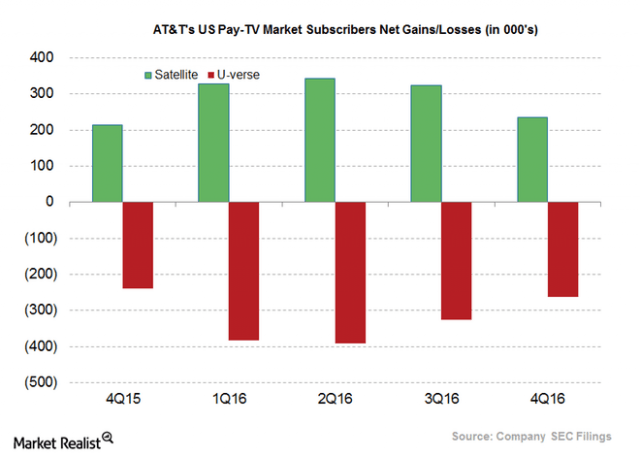 T-Mobile continues to raise the stakes against AT&T, Verizon Wireless and Sprint with another improbable promotion that literally gives away an extra line of service for free.
T-Mobile continues to raise the stakes against AT&T, Verizon Wireless and Sprint with another improbable promotion that literally gives away an extra line of service for free.
“Today, I’m thanking customers by giving them one of the things they want the most – a way to connect more of their family or more of their devices all the time,” said John Legere, president and CEO of T-Mobile. “That’s why we’re giving customers a free line to use any way they choose!”
The press release offers customers a variety of options:
Current T-Mobile customers with at least two voice lines can use that extra line however they want. Get an extra line of unlimited T-Mobile ONE. Or if you have Simple Choice, you’ll get an extra Simple Choice line with your same data plan. Or use your free line for a new tablet or smartwatch. Or turn your car into a 4G LTE hotspot and a lot more with SyncUp Drive. It’s your call!
The “2 Unlimited Lines for $100 All In” promotion that began this morning offers new or current customers a chance to score a free extra line of service (after bill credits). The discount continues indefinitely and is also good for customers with more than two lines on their T-Mobile account. Here are the details:
- How do I get the free add a line promotion?
- Starting March 1st, for a limited time only, anyone activating 2 unlimited lines on T-Mobile ONE, and existing customers with at least 2 voice lines on T-Mobile ONE or Simple Choice can get 1 additional line for FREE after bill credit.
- All free lines must be activated during the promotional period and you can keep the promotional pricing as long as you maintain qualifying service and line count. Customers may take advantage of this offer in addition to other offers and promotions, including 2/$100 and Carrier Freedom.
- Who’s eligible for this promotion?
- New customers, current customers and employees are eligible to receive this offer as long as they are on a qualifying rate plan, have two paid voice lines, and an account in good standing.
- Customers with one voice line will need to migrate to T-Mobile ONE and add a second paid voice line to qualify for the FREE Line. Qualifying new and existing @Work customers may add one additional qualifying line on us for a max of 12 lines total.
- How does the offer work?
- The free line will match your current paid voice line data, i.e. T-Mobile ONE customers will receive a FREE T-Mobile ONE line and similarly, Simple Choice customers will receive a FREE Simple Choice line.
- If your lines have varying amounts of data, the free line will match the line with the least amount of data. Existing customers with two paid voice lines get a free line whether you’re adding a smartphone line, tablet line or wearable.
- In most cases, you will see your free line credit on your first bill. If credit is not applied on the first bill, two credits will appear on the second bill.
- For customer’s not on the new T-Mobile ONE taxes and fees included plan, taxes/fees may be applied to pre-bill credit price. A maximum of 1 free line can be added per account.
- If you cancel service on one of your lines within 12 months or migrate to another plan, you will lose the monthly bill credit for the free line.
- Where is this offer available?
- Anywhere that T-Mobile offers new lines of service, including T-Mobile retail stores nationwide, and authorized postpaid dealers.

Legere
For most customers, signing up with a T-Mobile ONE plan with unlimited phone, texting, and data will offer the best value and simplify the promotion by matching the same kinds of service on all three (or more) lines. This also guarantees your new line will cost absolutely nothing because T-Mobile ONE bundles all taxes and fees into the cost of service, which in this case is free. On similar promotions at other carriers, customers are on the hook for up to $10 a month in taxes, fees, and various surcharges on that “free” line.
You can bring a device to this plan or buy one from T-Mobile. A new SIM card is required, and T-Mobile charges an outrageous $25 to get one through their website or in stores. But many customers report if you call T-Mobile customer service from a T-Mobile phone on 611, a discounted SIM card for 99 cents is usually available if you ask.
T-Mobile has not put an expiration date on the offer. Judging from customer buzz, there is considerably interest in this offer and a lot of disbelief it comes free of charge.
T-Mobile acknowledges there are some billing issues going on at the wireless carrier as it continues to add customers. At present, customers will see a charge for the service followed by a bill credit, which may take up to two bill cycles to appear (but is retroactive back to your signup date.). It appears T-Mobile bills customers for the free line of service several days before a corresponding credit is issued, which has confused some customers being billed for a service and credited for it on the following month’s invoice. But many on autopay say T-Mobile actually deducts the correct amount (with the credit applied) no matter what the bill indicates. Customer service is also on hand to issue on the spot credits for concerned customers, and T-Mobile claims it is working through this billing issue and should have it resolved.
To take advantage of this offer, customers must not have canceled a line after Jan. 1, 2017. T-Mobile wants this offer to encourage customers to add lines, not convert existing lines from one plan to another.


 Subscribe
Subscribe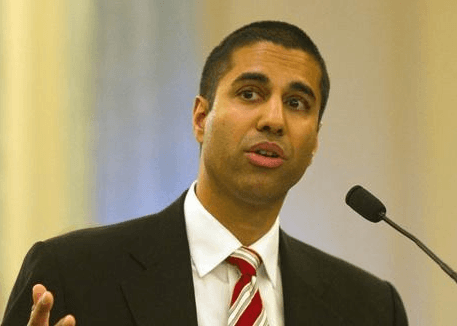
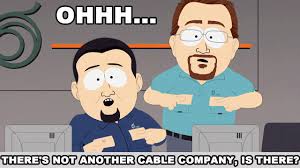 The FCC order approving the merger deal was hardly onerous, requiring Charter to compete head-to-head for customers in places the company can choose itself. Lawmakers eliminated exclusive cable franchise agreements years ago, but established major cable operators like Charter have gone out of their way to avoid competing in areas that already receive cable service. While Wheeler may have hoped some of that competition would be directed against fellow cable companies, Charter CEO Thomas Rutledge quickly made clear to investors and the FCC Charter would continue to avoid direct cable competition, instead promising to expand service into non-cable areas that already get DSL service from the phone company or no broadband at all.
The FCC order approving the merger deal was hardly onerous, requiring Charter to compete head-to-head for customers in places the company can choose itself. Lawmakers eliminated exclusive cable franchise agreements years ago, but established major cable operators like Charter have gone out of their way to avoid competing in areas that already receive cable service. While Wheeler may have hoped some of that competition would be directed against fellow cable companies, Charter CEO Thomas Rutledge quickly made clear to investors and the FCC Charter would continue to avoid direct cable competition, instead promising to expand service into non-cable areas that already get DSL service from the phone company or no broadband at all.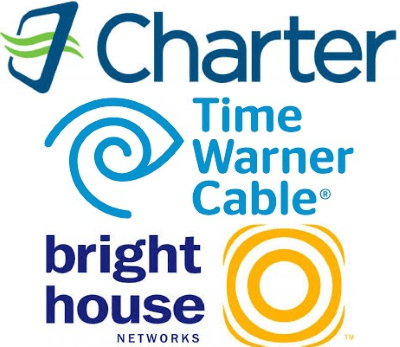 Rutledge’s clear views about Charter’s expansion plans apparently never made it to the American Cable Association, a cable industry lobbying group that defends the interests of independent and smaller cable operators. Despite Rutledge’s public statements, the ACA and its members are afraid Charter could expand on their turf anyway, potentially forcing small cable operators to compete with the same level of service Charter offers. The horror.
Rutledge’s clear views about Charter’s expansion plans apparently never made it to the American Cable Association, a cable industry lobbying group that defends the interests of independent and smaller cable operators. Despite Rutledge’s public statements, the ACA and its members are afraid Charter could expand on their turf anyway, potentially forcing small cable operators to compete with the same level of service Charter offers. The horror.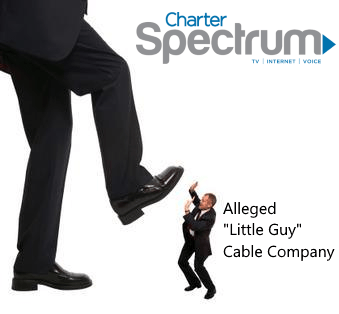 The real goal here is to minimize direct competition at all costs. The FCC’s deal conditions already included the need for more rural broadband expansion. Wheeler’s second goal was to introduce a new model — cable company competing against cable company — fighting for new customers by offering consumers better service and pricing. The existence of such competition would belie the industry’s claim that cable overbuilds and head-to-head competition is uneconomical. Wildly profitable, perhaps not, but certainly possible. Historically, the traditional way cable operators dealt with the few instances of direct cable competition was to buy them out to put them out of business. Rutledge was certainly thinking along those lines when he complained that the FCC’s order to compete did not include permission to eventually devour its competitor, effectively making competition go away.
The real goal here is to minimize direct competition at all costs. The FCC’s deal conditions already included the need for more rural broadband expansion. Wheeler’s second goal was to introduce a new model — cable company competing against cable company — fighting for new customers by offering consumers better service and pricing. The existence of such competition would belie the industry’s claim that cable overbuilds and head-to-head competition is uneconomical. Wildly profitable, perhaps not, but certainly possible. Historically, the traditional way cable operators dealt with the few instances of direct cable competition was to buy them out to put them out of business. Rutledge was certainly thinking along those lines when he complained that the FCC’s order to compete did not include permission to eventually devour its competitor, effectively making competition go away.
 Verizon will invite several thousand customers in 11 cities to participate in a “pre-commercial”
Verizon will invite several thousand customers in 11 cities to participate in a “pre-commercial” 
